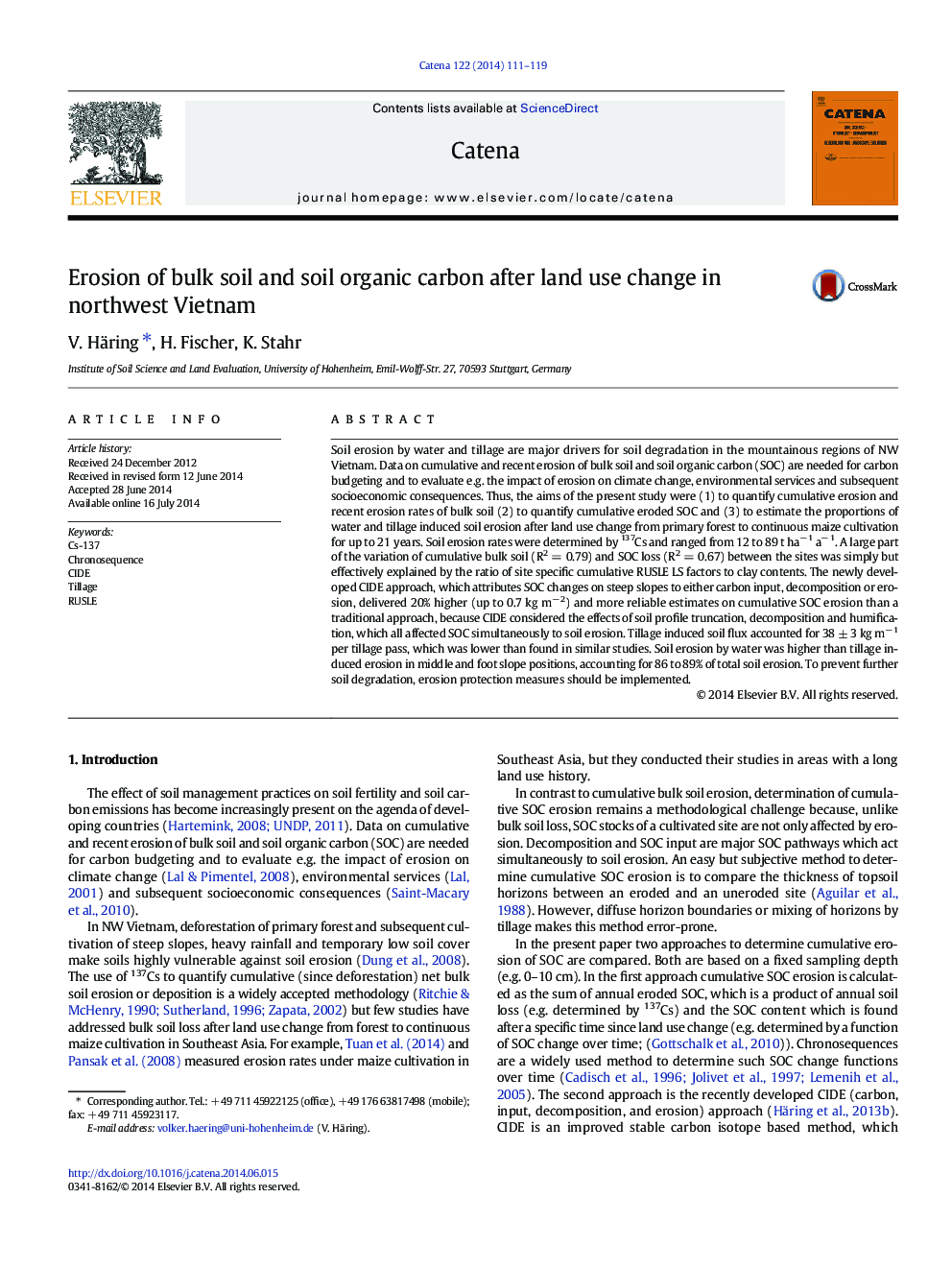| کد مقاله | کد نشریه | سال انتشار | مقاله انگلیسی | نسخه تمام متن |
|---|---|---|---|---|
| 4571403 | 1629230 | 2014 | 9 صفحه PDF | دانلود رایگان |
• Cumulative and annual soil erosion was determined with 137Cs.
• Land use change from forest to maize caused erosion of 12 to 89 t soil ha− 1 a− 1.
• Cumulative soil C erosion was reliably determined with the new CIDE approach.
Soil erosion by water and tillage are major drivers for soil degradation in the mountainous regions of NW Vietnam. Data on cumulative and recent erosion of bulk soil and soil organic carbon (SOC) are needed for carbon budgeting and to evaluate e.g. the impact of erosion on climate change, environmental services and subsequent socioeconomic consequences. Thus, the aims of the present study were (1) to quantify cumulative erosion and recent erosion rates of bulk soil (2) to quantify cumulative eroded SOC and (3) to estimate the proportions of water and tillage induced soil erosion after land use change from primary forest to continuous maize cultivation for up to 21 years. Soil erosion rates were determined by 137Cs and ranged from 12 to 89 t ha− 1 a− 1. A large part of the variation of cumulative bulk soil (R2 = 0.79) and SOC loss (R2 = 0.67) between the sites was simply but effectively explained by the ratio of site specific cumulative RUSLE LS factors to clay contents. The newly developed CIDE approach, which attributes SOC changes on steep slopes to either carbon input, decomposition or erosion, delivered 20% higher (up to 0.7 kg m− 2) and more reliable estimates on cumulative SOC erosion than a traditional approach, because CIDE considered the effects of soil profile truncation, decomposition and humification, which all affected SOC simultaneously to soil erosion. Tillage induced soil flux accounted for 38 ± 3 kg m− 1 per tillage pass, which was lower than found in similar studies. Soil erosion by water was higher than tillage induced erosion in middle and foot slope positions, accounting for 86 to 89% of total soil erosion. To prevent further soil degradation, erosion protection measures should be implemented.
Journal: CATENA - Volume 122, November 2014, Pages 111–119
